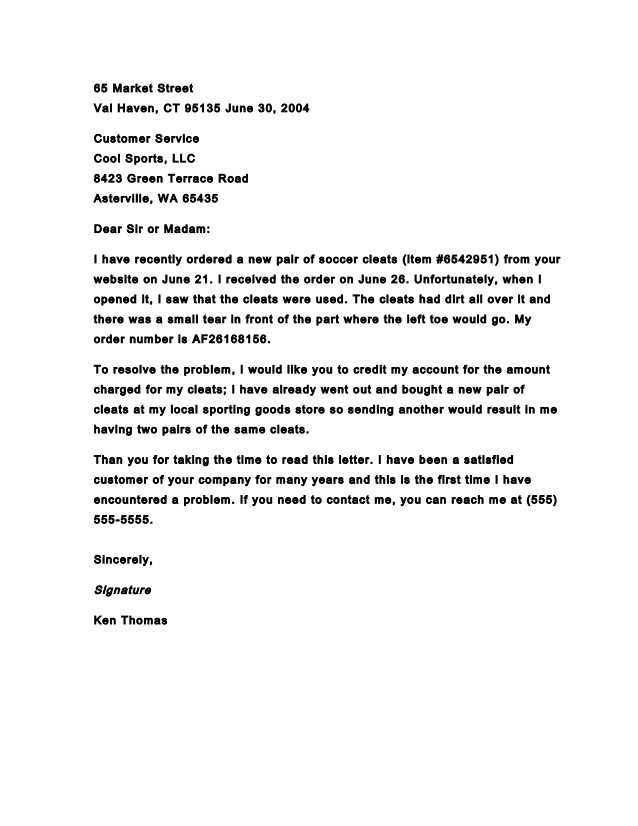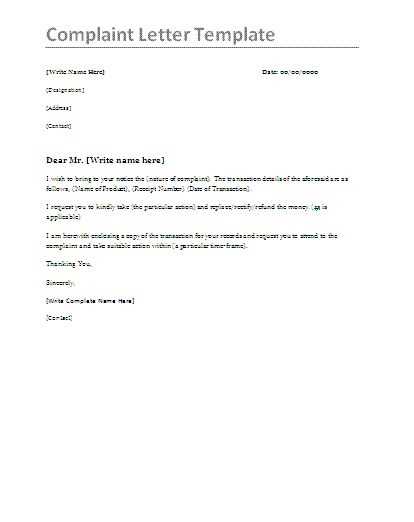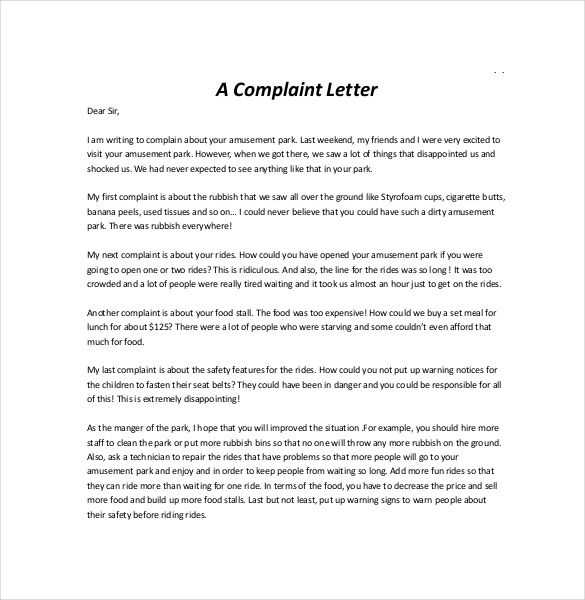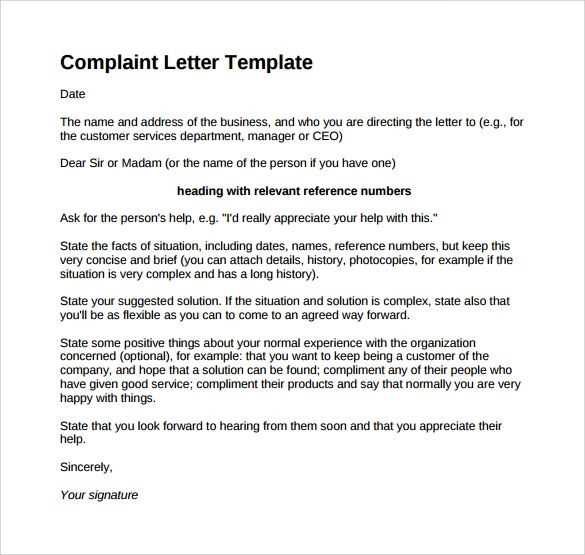Business Letter Complaint Template for Professional Communication

When issues arise between individuals or organizations, expressing dissatisfaction in writing can be an effective way to address the situation. Crafting a clear and professional message can lead to constructive solutions, while maintaining respect and courtesy. The right approach ensures that the communication stays productive, allowing for resolution without escalating tensions.
Key Elements of a Formal Communication
When drafting a formal communication to express concerns, there are essential components to include. These elements help convey your message in a clear and respectful manner:
- Clear Identification of the Issue: Start by briefly describing the problem or situation that has led to dissatisfaction.
- Specific Details: Include relevant facts, dates, and any other information that can help clarify the situation.
- Desired Outcome: Be clear about what you are hoping for in terms of resolution or action.
- Polite Tone: Even when addressing a problem, it is important to maintain a tone of professionalism and respect.
Organizing the Message Effectively

Structure your message logically, starting with a brief introduction of the issue, followed by the details and your request for a resolution. This approach helps to keep the message concise and ensures that the recipient understands the concern right away.
Language and Tone Considerations
Using formal language is important. Avoid informal language or slang, as it may not be taken seriously. Instead, use polite and neutral wording to express the issue. For example, “I am writing to bring to your attention…” is more effective than “I’m upset about…”. The goal is to foster a cooperative atmosphere rather than create a confrontational one.
Practical Tips for Effective Communication
Consider these practical tips when drafting your communication:
- Be Concise: Stick to the facts and avoid unnecessary details that could cloud your message.
- Proofread: Always read your message before sending to check for spelling, grammar, or tone issues.
- Stay Objective: Focus on the facts rather than emotions to keep the conversation productive.
Personalizing Your Message
Personalization can make your communication more impactful. If you have a past relationship with the recipient, acknowledge it respectfully. For instance, “As we have worked together previously, I believe you will understand my concerns.” Tailoring the message based on the recipient’s role or experience can also strengthen your argument.
Understanding Professional Concerns and Effective Communication

When problems arise between organizations or individuals, addressing these issues in writing is an essential practice. Clear communication helps to highlight concerns, seek resolution, and maintain positive relationships. The goal is to articulate your point in a way that encourages understanding and facilitates action, without escalating tensions unnecessarily.
Writing a formal communication is crucial for ensuring that your issue is taken seriously. A well-structured message creates a clear record of your concerns and requests. It also serves as a professional way to initiate resolution, allowing both parties to focus on resolving the issue constructively rather than on misunderstandings.
Key Elements for Effective Communication
The foundation of a strong written communication includes several key components that ensure clarity and professionalism:
- Problem Identification: Clearly state what the issue is, ensuring that it is easy to understand.
- Supporting Information: Provide relevant facts, evidence, or examples that illustrate the concern in detail.
- Expected Outcome: Specify what you are hoping to achieve through your communication–whether it’s a resolution, compensation, or another form of action.
- Respectful Language: Keep your tone neutral and polite, avoiding overly emotional language.
Maintaining Professionalism in Tone
It’s important to keep a respectful tone throughout the communication. Even if you are addressing a serious issue, maintaining a calm, objective, and professional voice ensures that your message is received in the way it is intended. Using phrases like “I would appreciate your attention to this matter” instead of “This needs to be fixed now” can foster a more cooperative environment.
Avoiding Common Pitfalls
There are several mistakes to avoid when writing about issues. These include using overly aggressive language, being too vague, or neglecting to offer a potential solution. Additionally, ensure that your message is concise and direct, without unnecessary information that could distract from the core issue.
Formatting Your Message Properly

The way you format your communication is just as important as its content. Keep the layout clean and easy to read by using clear headings, proper paragraphs, and bullet points where necessary. This structure not only makes it easier for the reader to follow, but it also enhances the professionalism of your message.
Real-Life Examples and Personalization
Incorporating examples of similar situations can help to clarify the issue and demonstrate that the concern is genuine. Tailoring your message to reflect the specific context of your communication or the recipient’s role can also make your message more effective. For instance, referencing past interactions or addressing the recipient by name adds a personal touch that helps strengthen your case.